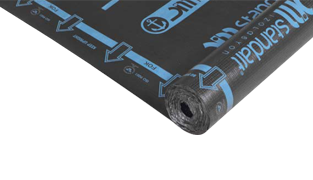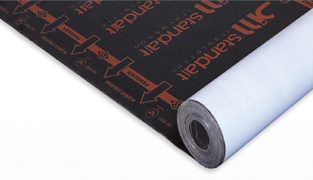Pvc Membrane | Roofing - PVC Single Ply Roofing Systems
Categories
Special Products
Frequently Asked Questions
- Why do you recommend waterproofing??
The permeative water to our buildings causes corrasion of the irons which placed in carrier parts of our buildings and reducing of the carriage capasity. The water causes corrosion and cracking of the concrete.Water insulation application helps us for healthy and comfortable environment by not only providing the safety of the building but also providing to protect bacteria and mold growth, by preventing the leakage of the water from our roofs and ceilings.
- What is Bituminous waterproofing membrane?
Bituminous water proofing membrane is waterproofing membranes manufactured together with reinforcement or without reinforcement by modifying the bitumen with polymer based plastics.
- What are the usage areas of bituminous waterproofing membranes?
Bituminous waterproofing membranes can be used for almost all areas in our buildings where the water leakage can occur.General usage areas of bituminous membranes are such as (firstly, the walls contacting ground, foundations and floors fit the ceiling ), outer walls which the water accumulation mighth happens out of the building or under the level of the water which might flood, balconies, terrace and pitched roofs and bathroom,lavatory,wc.
- Bituminous waterproofing membranes is also used for in following areas:
Water tanks,artificial lakes and pools, supporting wall, concrete canalettes, otoparks, highways projects with high tension,high ways, on the roads enable transportation with rail system , bridge, viaduct.
- What is the usage purpose of reinforcement in bituminous waterproofing membranes?
It is used for the aim of increasing the mechanical resistance of bituminous water proofing membranes against to building movements and its carried force.Polyester felt or glasswool (fiberglass) reinforcements are generally used in bituminous water proofing membranes.
- Is it possible to make application of bituminous water proofing membranes without using emulsion as primer?
Primer helps us to get clear surface by destroying the preventive adhesion effects of some substainces such as dust and soil on the surface.It also increases the adherense between bituminous water proofing membranes and concrete surfaces.
- What is the economic life of bituminous water proofing membranes ?
- Can we get definete solution for waterproofing by using bituminous water proofing membranes?
It is firstly necessary to choose appropriate bituminous water proofing membranes for the application area.
Afterwards,definite solution will be reached with right supplementary accessary products and qualified workmanship.
- Are bituminous water proofing membranes sufficient alone for the water proofing.
Bituminous water proofing membranes is suffiecent for the water proofing but it is also used additional accessaries ( ventilation systems,drainer, pressure bar, etc.) to complete the waterproofing.
- Is getting waterproofing application expensive? How much does it cost?
The cost of waterproofing might change depends on shape of the building where the application will be applied, the method of the application and many more factors.
This is why, it will be hard to express net figures regarding to the cost.
The cost of waterproofing in new buildings might be considered in at least %1 of the cost of the building and mostly %3,just to give a rough idea.
But the benefits of that waterproofing will be much more than this cost.
One of the important point should be considered is the cost of the waterproofing in case applying it to finished construction instead of during the process of construction will be much more expensive becasuse of additional costs such as excavation, drainage, more labor cost, etc. - Is it deformable to carry the bituminous waterproofing membrane rolls in horizontal position for the material?
It is no good to carry the bituminous waterproofing membrane rolls in horizontal as the shape of the rolls carried in horizontal become deformed.
It might not be possible to use deformed membranes in that case.
This is why, the rolls must be carried and stored in upright position.
- Are bituminous waterproofing membranes resistant to UV sunlight?
Waterproofing membranes with granule or coated aluminium foil are resistant to UV sunlight.
The other waterproofing membranes do not effect from UV lights If they are coated with a protection layer such as screed, concrete, coating sheets,etc.
- Do bituminous waterproofing membranes achieve thermal heating?
Bituminous waterproofing membranes does not achieve thermal insulation, it is water proofing material.
- Do mineral coated bituminous waterproofing membranes fade over time?
The mineral granules in many colours do not fade even they are exposed to sunlights long term under clear weather conditions. However, dusting and dirting on the minerals due to environmental effects might effect the originality of the colour.
- Do bituminous membranes melt in warm weathers?
The bituminous waterproofing membranes which can be melted by heat sources need excessive heat to melt.
The bituminous waterproofing membranes do not melt in warm weathers because the weather temperature does not reach to a heat that can melt the bitumen based waterproofing membranes under the existing climate conditions.
The only thing might occur is softening of the membranes and that does not deform the shape of them.
- Are bituminous membranes applied on only concrete surfaces?
They are generally applied on concrete and wooden surfaces.
Bonding of the membranes on the other surfaces is also possible.
- What should be paid attention after the application of bituminous waterproofing membranes?
Cutting or perforating should not be done on the application surface.
Besides,any cutter and perforater articles which might damage the application should be removed from the application area.
Bituminous membranes should be coated with a protection layer to avoid them damages of mechanical effects, UV lights and heavy weather conditions.( Screed,application sheets, etc.)
Aluminium foil coated or mineral coated membranes do not need to be coated with a protective layer.
- Can I appy aluminium coated or mineral coated bituminous waterproofing membranes as single layer?
If the roof slope is equal or less than %5, the waterproofing application should be applied at least as two layers.
If the roof slope is more than %5 and the building is outside of the freez zones, one layer waterproofing membrane with 4 mm.thickness and polyester reinforcement might be applied.
- What is the reason that the waterprofing membrane rolls are generally 10 metre lenght ?
The bituminous waterproofing membranes are on sale with the size of 1 mt. width and 10 or 15 mt. lenght.
The reason of that, these sizes enable easiness during the carriage and application.
- What side of the bituminous waterproofing membranes should be connected to surface during the application?
The other surfaces of mineral coated and aluminium coated bituminous waterproofing membranes are convenient for connecting.
Both surfaces of the other bituminous waterproofing membrane apart from mineral coated and aluminium coated ones have connecting convinience but the outer side of the membranes in roll is the side to be connected.
- Is walking allowed on mineral coated bituminous waterproofing membranes?
For maintanance, repairing reasons or some similiar rare occasions, walking on mineral coated bituminous waterproofing membranes allowed.
In that case, utmost attention and wearing flat-soled shoes as much as possible is needed.
- Is it possible to provide waterproofing insulation by making the application of ceramic or mosaic?
The products such as ceramic and mosaic are coating materials.
Those are not waterproofing materials.
Waterproofing materials should be used to provide waterproofing.
- Is it possible to make the application of waterproofing membranes in all climate conditions?
Application of these products under any climate conditions is not possible.The application should be applied at unrainy weather condition or on a dry surface.Especailly under the cold climate conditions, bituminous membranes should be used at the temparature of over +5 °C after they are kept waited at the temparature of over +5.
- What sort of application should be made to avoid the crushing of the bituminous waterproofing membranes(which applied under the builder's foundation) under the weight of building ?
According to the pressure rules which occur because of the building's weight;
Number of waterproofing layers should be detected according to the building's pressure to the soil for the foundation waterproofing.
The bigger one amongst number of layers (which indicated at following list.) is applied. (TS 11758-2)
Example: The detailed application for the foundation insulation with 0.15 MPa soil pressure and 1.5 m. water pressure is two layers membrane with 3mm + 3mm polyester felt.
- How to store the bituminous waterproofing membranes?
The rolls should be stored upright position on a smooth floor or surface.Moreover, the rolls should also be carried upright position during their transfer to somewhere else.
a.The rolls should not be piled on one another and heavy goods should not be placed on the rolls.
b.Bituminous waterproofing membranes should be kept away from heat sources.
c.The rolls should not be exposed to sudden temparature changes.
d.They should be protected from frost and sunlight.
- What should be made a point of choosing the bituminous waterproofing membranes?
There are many criteria to consider during the choosing of bituminous waterproofing membranes?
The initial ones are climate conditions of the area where the building is located and features of the building.
It should be preferred quality products with TSE certificate, quality certificate when choosing bituminous waterproofing membranes.
Preferring poor quality material causes poor waterproofing application including with additional costs.
- Can I make the application of the bituminous waterproofing membranes by myself or get them applied by acquaintance applicators?
Your buildings must be definetely examined by the experts and it is more appropriate to get the waterproofing applications special to your problem's solution applied by the specialized waterproofing companies in the sector.
You can reach these companies through STANDART İZOLASYON A.Ş.
- Is waterproofing necessary If it seems no ground water on the soil where the building will be located.
- Can bituminous waterproofing membrane application on the roofs also be applied for interior house and flat.
It is applicable for interior house and flat.
Wet areas applications is the best example of this.
- Can bituminous waterproofing membranes lay under the tiles on the roofs ?
Dust and some unwanted substances runs through the roof or possible water leakage happens through the tiles because of the wind effect.
Laying bituminous waterproofing membranes under tile is quite useful to avoid this including with its long-term solution advantage.
- Is hand or skin contact with bituminous waterproofing membranes hazardous?
Contacting with bituminous membranes is not hazardous and does not cause any health problem.
If bituminous water proofing membranes is appropriately selected and detailed, It can keep its performance permanently during the period of building's life.But the economical life of lower quality bituminous water proofing membranes is shorter.
Even If it is not on the ground, the soil moisture and surface waters might cause corrosion on the foundation over time.This is why, it is necessary to apply waterproofing on the foundation walls and shear walls.


